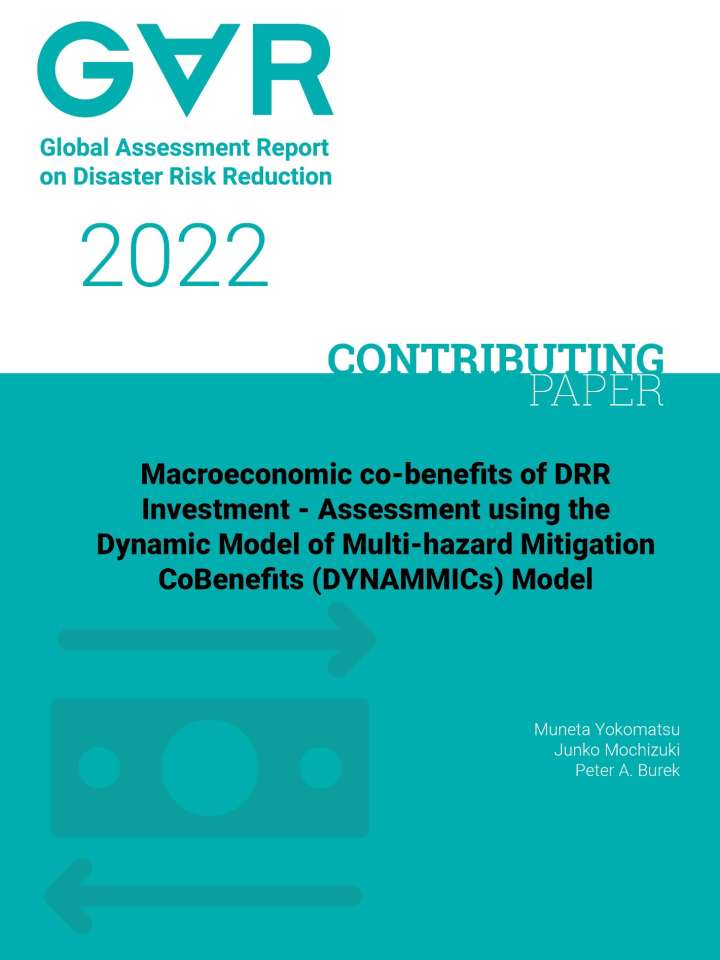Macroeconomic co-benefits of DRR investment: Assessment using the Dynamic Model of Multi-hazard Mitigation CoBenefits (DYNAMMICs) model
This contributing paper aims to bridge the important knowledge gap between the conceptualization of disaster risk reduction (DRR) benefits and its formal theoretical underpinnings and methods for quantifying benefits. This study also introduces a new macroeconomic framework for quantifying the multiple benefits of DRR investment. One of the most widely adopted framings, ‘Triple Dividends’ (Tanner et al. 2015), presents a series of narratives in which DRR investment not only protects but also fosters growth and other societal welfare but it falls short in how to quantify such multiple benefits. Given that the interaction of disaster risk with DRR investment and the macroeconomy is complex, the lack of detailed understanding regarding such dynamics limits the ability to effectively design a set of DRR investment options that yield synergies between DRR and other development aspirations. The Dynamic Model of Multi-hazard Mitigation CoBenefits (DYNAMMICs) framework serves to model the macro-economic benefits of DRR investments in this study.
This study finds that, unlike the narrative-based approach used in the previous studies, the DYNAMMICs framework has demonstrated the complexity associated with the triple dividends concept. Different DRR investment options yielded a wide ranging trajectories of the 1st, 2nd and 3rd dividends, suggesting that a more careful analysis is needed to capture the full potential of DRR investment to foster the triple dividends. However, the DYNAMMICs framework proposed in this study is capable of evaluating multiple hazards and investment options at the same time and offers a way to evaluate the potential of DRR investment to create synergies with other development goals.
